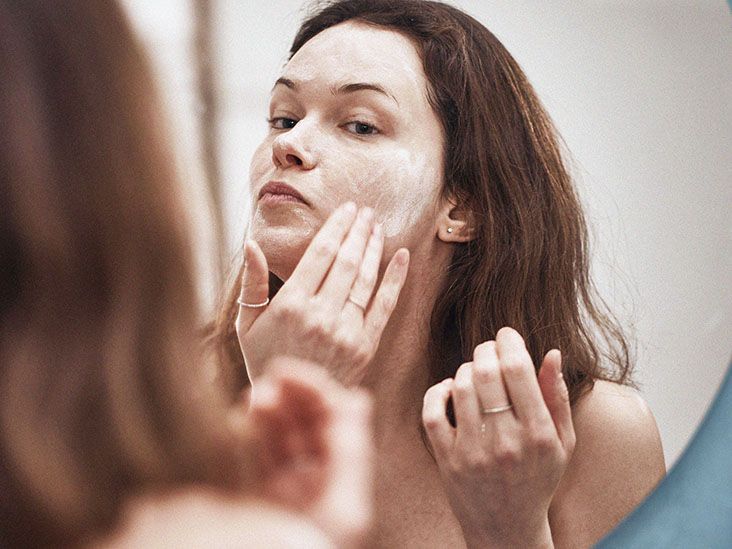“Explore the effectiveness of salicylic acid for acne treatment, learn how to use it properly, and understand its potential side effects. Discover how this powerful ingredient can help you achieve clearer skin.”
Introduction
Acne is a common skin condition that affects millions of people worldwide. While there are various treatments available, salicylic acid has become a popular choice for managing acne. Known for its effectiveness, salicylic acid can be a powerful tool in your skincare arsenal. In this comprehensive guide, we’ll explore the effectiveness of salicylic acid, how to use it properly, and potential side effects to ensure you get the best results.
What is Salicylic Acid?
Salicylic acid is a beta-hydroxy acid (BHA) derived from willow bark. It’s widely used in skincare products due to its ability to exfoliate the skin, unclog pores, and reduce inflammation. Salicylic acid works by breaking down the bonds between dead skin cells, allowing them to be shed more easily. This helps to prevent clogged pores, which can lead to acne.
How Salicylic Acid Works for Acne
Salicylic acid is particularly effective for acne treatment due to its ability to:
- Exfoliate the Skin: Salicylic acid penetrates the pores and helps to exfoliate the skin from within. This process removes dead skin cells that can clog pores and contribute to acne formation.
- Reduce Inflammation: It has anti-inflammatory properties that can help to reduce redness and swelling associated with acne.
- Unclog Pores: By dissolving the debris and oil within pores, salicylic acid helps to prevent and clear up acne breakouts.
- Improve Skin Texture: Regular use can lead to smoother skin and a reduction in acne scars over time.

Benefits of Salicylic Acid for Acne
- Effective Treatment for Acne: Salicylic acid is widely recognized for its effectiveness in treating acne, including blackheads and whiteheads.
- Reduces Breakouts: Regular use can help to prevent future breakouts by keeping pores clear.
- Improves Skin Appearance: It can enhance overall skin texture and reduce the appearance of acne scars.
- Gentle on the Skin: Compared to some other acne treatments, salicylic acid is relatively gentle and suitable for most skin types.
How to Use Salicylic Acid for Acne
To maximize the benefits of salicylic acid, follow these guidelines:
- Start Slowly: Begin with a lower concentration of salicylic acid (e.g., 0.5% to 2%) to see how your skin reacts.
- Apply to Clean Skin: Cleanse your face before applying salicylic acid to ensure it’s effective. Use a gentle cleanser suited for your skin type.
- Apply Evenly: Use a small amount of salicylic acid product and apply it evenly to affected areas. Avoid applying it to broken or irritated skin.
- Follow with Moisturizer: After application, follow up with a moisturizer to prevent dryness and maintain skin hydration.
- Use Sunscreen: Salicylic acid can increase your skin’s sensitivity to the sun, so it’s essential to apply sunscreen during the day.

Dosage Guidelines for Salicylic Acid
- Over-the-Counter Products: Most over-the-counter salicylic acid products contain concentrations ranging from 0.5% to 2%. Use as directed on the product label.
- Prescription Products: If prescribed by a dermatologist, higher concentrations may be used. Follow your doctor’s instructions carefully.
Potential Side Effects of Salicylic Acid
While salicylic acid is generally safe, some people may experience side effects, including:
- Dryness: Overuse or high concentrations can lead to dryness and peeling of the skin.
- Irritation: Some users may experience redness, burning, or irritation, especially if the product is used too frequently.
- Allergic Reactions: Though rare, some individuals may have an allergic reaction. Discontinue use if you notice severe itching, swelling, or rash.
- Sun Sensitivity: Increased sensitivity to sunlight is a common side effect. Use sunscreen to protect your skin.
How to Incorporate Salicylic Acid into Your Skincare Routine
- Choose the Right Product: Select a product that matches your skin type and needs. Options include cleansers, toners, and spot treatments.
- Patch Test: Before using a new product, perform a patch test to check for any adverse reactions.
- Monitor Your Skin: Keep an eye on how your skin responds to salicylic acid and adjust usage as needed. If irritation occurs, reduce frequency or concentration.
- Consult a Dermatologist: If you have sensitive skin or severe acne, consult a dermatologist to determine the best approach and concentration for your specific condition.

Conclusion
Salicylic acid is a proven and effective treatment for acne, offering multiple benefits such as exfoliation, reduced inflammation, and unclogged pores. By using it correctly and being mindful of potential side effects, you can integrate salicylic acid into your skincare routine to achieve clearer, healthier skin. Always consult with a healthcare provider if you have concerns or pre-existing conditions that may affect your treatment options.
